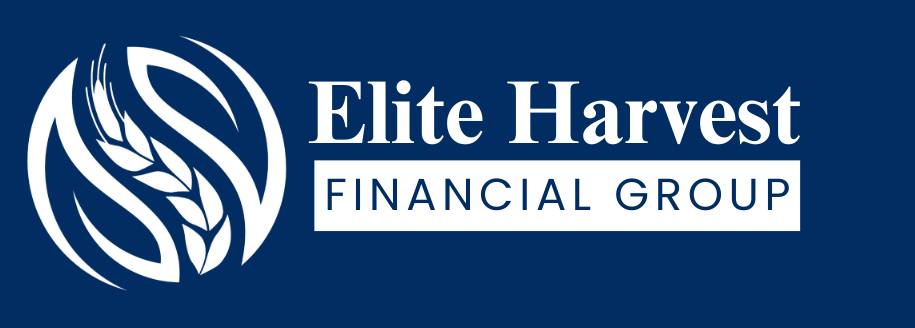Self-employed professionals face a unique financial risk that many overlook until it’s too late – what happens if disability prevents you from working? Unlike employees with company benefits, when you’re running your own business, there’s no safety net waiting to catch you if illness or injury strikes.
As a self-employed individual in Whitby, your income depends entirely on your ability to work. Therefore, disability insurance becomes not just an optional coverage but a crucial financial safeguard. According to recent statistics, one in four workers will experience a disability that prevents them from working before they reach retirement age. Despite this reality, many independent professionals in Whitby operate without proper protection, putting both their personal finances and business continuity at risk.
Why Disability Insurance Matters for the Self-Employed
For independent professionals, your ability to earn money directly depends on your capacity to work. This connection creates a fundamental vulnerability that disability insurance specifically addresses.
No employer-provided safety net
The reality for self-employed individuals is harsh – you operate without the traditional safety nets that employees take for granted. While employees benefit from employer-provided sick leave, group insurance plans, and sometimes short-term disability coverage, independent contractors face a different scenario altogether.
As a self-employed professional, you lack access to group insurance coverage. Additionally, you don’t have employer-provided sick leave or the structured benefits packages that employees receive. This absence of protection means you must create your own safety net.
Furthermore, workers with disabilities consistently report worse access to employment benefits compared to workers without disabilities, including disability insurance and paid sick leave. This gap becomes particularly significant for self-employed individuals who must navigate these challenges independently.
Income stops if you can't work
Perhaps the most immediate concern for self-employed professionals is the direct relationship between your ability to work and your income stream. When illness or injury prevents you from working, your business revenue typically halts completely.
For freelancers, consultants, and small business owners, this reality creates a precarious financial situation. Without disability coverage, you’re left relying solely on personal savings, which might last only a few weeks during an extended recovery period.
Moreover, the impact extends beyond just lost income. As a self-employed person, your absence from work often means business goes elsewhere, potentially creating long-term effects on your professional reputation and client base. Clients may seek services elsewhere during your recovery, making it necessary to rebuild your business once you’re able to return to work.
Notably, disability insurance can help cover both personal and business expenses including rent, mortgage, groceries, internet, phone service, and even bank loans or credit card payments. This comprehensive protection helps maintain both personal and business continuity during difficult periods.
Disability is more common than you think
Many self-employed professionals mistakenly believe disability is unlikely to affect them personally. However, statistics paint a different picture:
- On average, one in two people become disabled for more than three months during their working career
- When a disability lasts longer than 90 days, it typically continues for two to three years
- Only 8% of disabilities result from workplace accidents or car injuries
The most common causes of disability include:
- Mental health disorders ranging from clinical depression to substance abuse
- Cancers requiring extended treatment periods
- Cardiovascular diseases including heart attacks and strokes
- Musculoskeletal conditions like arthritis causing mobility issues
Most disability insurance plans replace between 60% and 85% of your normal income, providing crucial financial stability during recovery periods. For self-employed individuals who pay premiums personally, these benefits are generally tax-free, offering additional financial advantage during challenging times.
In essence, disability insurance serves as a financial bridge during periods when health issues prevent you from working. Given the statistical likelihood of experiencing disability and the complete income disruption it causes, this protection represents not just a safety net but a fundamental business planning tool for self-employed professionals.
Unique Challenges Faced by Whitby’s Self-Employed Professionals
Whitby’s entrepreneurial landscape presents distinct challenges for self-employed professionals seeking adequate disability protection. These challenges often make disability insurance simultaneously more essential yet more complicated to secure.
Fluctuating income and budgeting issues
Self-employed individuals in Whitby frequently experience income volatility that complicates financial planning. Unlike salaried employees with predictable paychecks, independent contractors and business owners face revenue fluctuations based on seasonal demands, project timelines, and economic conditions.
This income uncertainty creates several complications:
- Premium affordability concerns – During lean months, disability insurance premiums can strain already tight budgets
- Benefit calculation challenges – Insurance companies typically base disability benefits on average income, which becomes problematic when earnings fluctuate significantly
- Budget prioritization dilemmas – Many self-employed professionals prioritize business investments over personal protection, viewing insurance as an optional expense rather than essential safeguard
Self-employed individuals often underestimate their true earnings replacement needs. A comprehensive disability policy should account for both personal income needs and ongoing business expenses. Otherwise, you might find yourself with coverage that falls significantly short during disability periods.
Lack of group insurance access
Perhaps the most significant disadvantage for Whitby’s self-employed professionals is the absence of group insurance options. This limitation creates substantial barriers:
First, individual disability policies typically cost 15-30% more than comparable group coverage available to employees. This price differential exists because group plans spread risk across numerous participants, whereas individual plans must account for personal health factors and occupational risks.
Second, individual underwriting processes are considerably more rigorous. Insurance companies scrutinize your health history, occupation, and financial situation more intensely when assessing individual applications. This often results in coverage exclusions or premium increases based on pre-existing conditions or high-risk hobbies.
Third, self-employed individuals must navigate complex insurance options without the benefit of HR departments or benefits coordinators. This adds administrative burden to already busy professionals who must research, compare, and maintain appropriate coverage independently.
High personal and business liabilities
Whitby’s self-employed professionals often face intertwined personal and business financial responsibilities that create unique vulnerability during disability periods.
Many independent contractors and small business owners have significant overhead expenses that continue regardless of their ability to work. These might include:
- Office leases or workspace rentals
- Equipment payments
- Software subscriptions and technology costs
- Professional association memberships
- Employee or contractor payments
- Business loan obligations
Consequently, a comprehensive disability plan must address both personal income replacement and business expense coverage. Without this dual protection, your business could collapse during an extended disability, eliminating your livelihood even after recovery.
Additionally, self-employed individuals often lack clear boundaries between business and personal finances. This complicates insurance planning as traditional disability policies may not adequately address your unique situation. For instance, some expenses might fall into gray areas that standard policies don’t cover.
Finally, self-employed professionals in Whitby must consider their client relationships during potential disability periods. Client retention becomes especially challenging during extended absences, as clients may seek alternative service providers. This potential business loss represents another liability that proper disability planning must address through business overhead expense coverage or similar protections.
In essence, the self-employed in Whitby face a triple challenge: income unpredictability, higher insurance costs, and intertwined personal-business financial responsibilities. These factors make disability insurance planning both more complex and more essential than for traditionally employed individuals.
Types of Disability Insurance to Consider in 2025
Navigating the complex world of disability insurance options becomes crucial for self-employed professionals looking to secure their financial future. Understanding the distinct types available helps you select coverage that aligns with your specific needs and circumstances.
Short-term vs. long-term disability insurance
The primary distinction between these two fundamental policy types lies in their duration and benefit structure.
Short-term disability insurance provides immediate income support following an illness or injury. These policies typically cover up to 6 months of disability and replace 70-100% of your regular income. Short-term coverage serves as your first line of defense against temporary setbacks, offering higher replacement rates yet briefer protection periods.
In contrast, long-term disability insurance activates after short-term benefits, sick leave, or EI sickness benefits conclude. These policies generally replace 50-70% of your income for extended periods—sometimes until retirement age. Although the replacement percentage is lower, long-term disability coverage provides more substantial protection against serious conditions requiring lengthy recovery.
For self-employed professionals, securing long-term disability coverage often represents the wiser investment, given that extended disabilities typically last 2-3 years once they exceed 90 days.
Own-occupation vs. any-occupation policies
The definition of “disability” within your policy dramatically impacts your ability to claim benefits.
Own-occupation policies represent the gold standard for self-employed professionals. These policies pay benefits if you cannot perform the duties of your specific occupation, even if you could work in another field. For instance, a surgeon with hand tremors unable to operate would qualify for benefits even if capable of teaching medicine.
Regular occupation coverage sits in the middle ground, providing benefits if you cannot work in your field but ceasing if you take another job.
Any-occupation policies offer the least protection. Under these policies, you qualify for benefits only if unable to perform any occupation suited to your education or experience. Thus, a carpenter with a back injury might lose benefits if deemed capable of working a desk job, regardless of income disparity.
Guaranteed issue and simplified issue options
For those concerned about qualifying for coverage due to health conditions or seeking streamlined approval processes, two alternatives exist.
Guaranteed issue disability insurance completely bypasses medical underwriting, offering immediate approval without health questions. While accessible to everyone regardless of health status, these policies typically provide lower coverage limits—up to $1,741.70 monthly through carriers like Humania.
Simplified issue policies represent a middle ground, requiring minimal health questions yet offering higher potential benefits—up to $3,483.40 monthly. These policies suit individuals with minor health concerns and those prioritizing a quick, straightforward application process.
Edge Benefits stands out among carriers offering simplified underwriting, making disability coverage accessible through fast-tracked processes.
How to Choose the Right Coverage for Your Situation
Selecting the right disability coverage requires careful analysis of your specific financial situation. As a self-employed professional in Whitby, your protection needs differ significantly from traditional employees.
Assess your monthly income needs
First, determine how much income you’d need to maintain your lifestyle if unable to work. Most disability policies typically replace between 60% and 85% of your regular income. Aim for coverage that replaces at least 60-70% of your pre-disability earnings.
To calculate accurately, examine your current monthly expenses, including mortgage/rent, utilities, food, and other essential costs. Subsequently, estimate your disability monthly expenses, which are usually calculated at about 70% of your current monthly expenses.
Keep in mind that personally-paid disability benefits are generally tax-free, effectively providing higher net income replacement. This tax advantage makes the coverage more valuable than the stated percentage might initially suggest.
Consider your business expenses
In addition to personal income needs, evaluate your ongoing business obligations. Unlike employees, self-employed professionals often have fixed operating costs like office rent, internet, supplies, and potentially employee salaries.
Business overhead disability insurance specifically covers these expenses, allowing your business to continue operating during your recovery period. Some premiums may be tax-deductible, depending on how the plan is structured.
Look at your savings and emergency fund
Analyze your existing financial safety net before selecting coverage. Ideally, you should have an emergency fund covering 3-6 months of regular expenses.
For self-employed individuals with fluctuating income, this cushion becomes even more crucial. Your emergency savings serve as your first line of defense while waiting for disability benefits to begin, since most policies have waiting periods before payments start.
Evaluate your health and occupation risk
Your occupation significantly impacts both eligibility and premium costs for disability coverage. Insurance companies categorize occupations based on risk levels – desk jobs typically receive lower premiums compared to physically demanding occupations.
Certain high-risk professions face substantially higher disability rates. Workers in construction trades, transportation operations, machine operations, and food preparation have more than double the disability risk compared to managerial occupations.
Current health status likewise affects premiums and coverage options. Pre-existing conditions may increase costs or even lead to coverage denial in some cases. Consider simplified or guaranteed issue options if health concerns might limit your eligibility for traditional coverage.
Tax and Financial Planning Benefits of Disability Insurance
Beyond protection alone, disability insurance offers significant financial advantages for self-employed professionals. Understanding these benefits helps maximize the value of your coverage investment.
Tax-free benefits when premiums are paid personally
Self-employed individuals who pay disability insurance premiums with after-tax dollars receive a valuable advantage – benefits received during disability claims are typically tax-free. This tax treatment substantially increases the real value of your coverage. Essentially, while employer-paid premiums result in taxable benefits, personally-paid premiums create tax-free income during disability periods. This distinction proves crucial during financial planning, as tax-free benefits effectively provide higher replacement income than the stated percentage suggests.
Helps maintain business continuity
Disability insurance plays a fundamental role in business continuity planning. Indeed, proper coverage provides vital cash flow that keeps your business operational during your absence. These funds can cover essential expenses including rent, operational costs, salaries, and business debt payments. Without this protection, a disability might force business liquidation or even bankruptcy. Certain policies specifically designed for business continuity also provide funds to hire and train replacement staff.
Can be part of a broader financial strategy
Disability protection naturally integrates with comprehensive financial planning. To be sure, this coverage works alongside other financial tools including emergency savings, health spending accounts, and various tax credits. For self-employed professionals, disability insurance also improves creditworthiness with lenders and investors by demonstrating preparation for unexpected events. Fundamentally, protecting your earning capacity underpins all other financial goals and strategies.
Conclusion
Self-employment offers freedom and opportunity, yet leaves you vulnerable without proper disability protection. Throughout this guide, we’ve explored why disability insurance stands as a crucial safeguard for independent professionals in Whitby. Your entire income depends on your ability to work, therefore creating your own safety net becomes essential.
Disability statistics paint a sobering picture – one in two people experience disability lasting more than three months during their career. Most disabilities extend two to three years once they surpass 90 days. These facts alone should convince self-employed professionals to prioritize disability coverage alongside other business investments.
Choosing the right policy requires careful assessment of both personal and business needs. First, calculate your required monthly income replacement. Then, evaluate ongoing business expenses that would continue during your absence. Last, consider your emergency savings and occupation risk level. These factors combined will guide you toward appropriate coverage.
Tax advantages provide additional incentive for securing personal disability coverage. Benefits received from personally-paid policies typically remain tax-free, effectively increasing your replacement income during disability periods. This advantage, coupled with business continuity protection, makes disability insurance a cornerstone of sound financial planning.
Self-employed professionals face enough uncertainty already. Market fluctuations, client retention challenges, and business development demands create sufficient stress without adding disability risk. Proper disability insurance eliminates one major uncertainty, allowing you to focus on growing your business with confidence.
Take action now to protect your most valuable asset – your ability to earn income. Disability insurance might seem like just another expense today, but it could become your financial lifeline tomorrow. Secure your future, safeguard your business, and give yourself peace of mind knowing you’ve protected what matters most.







